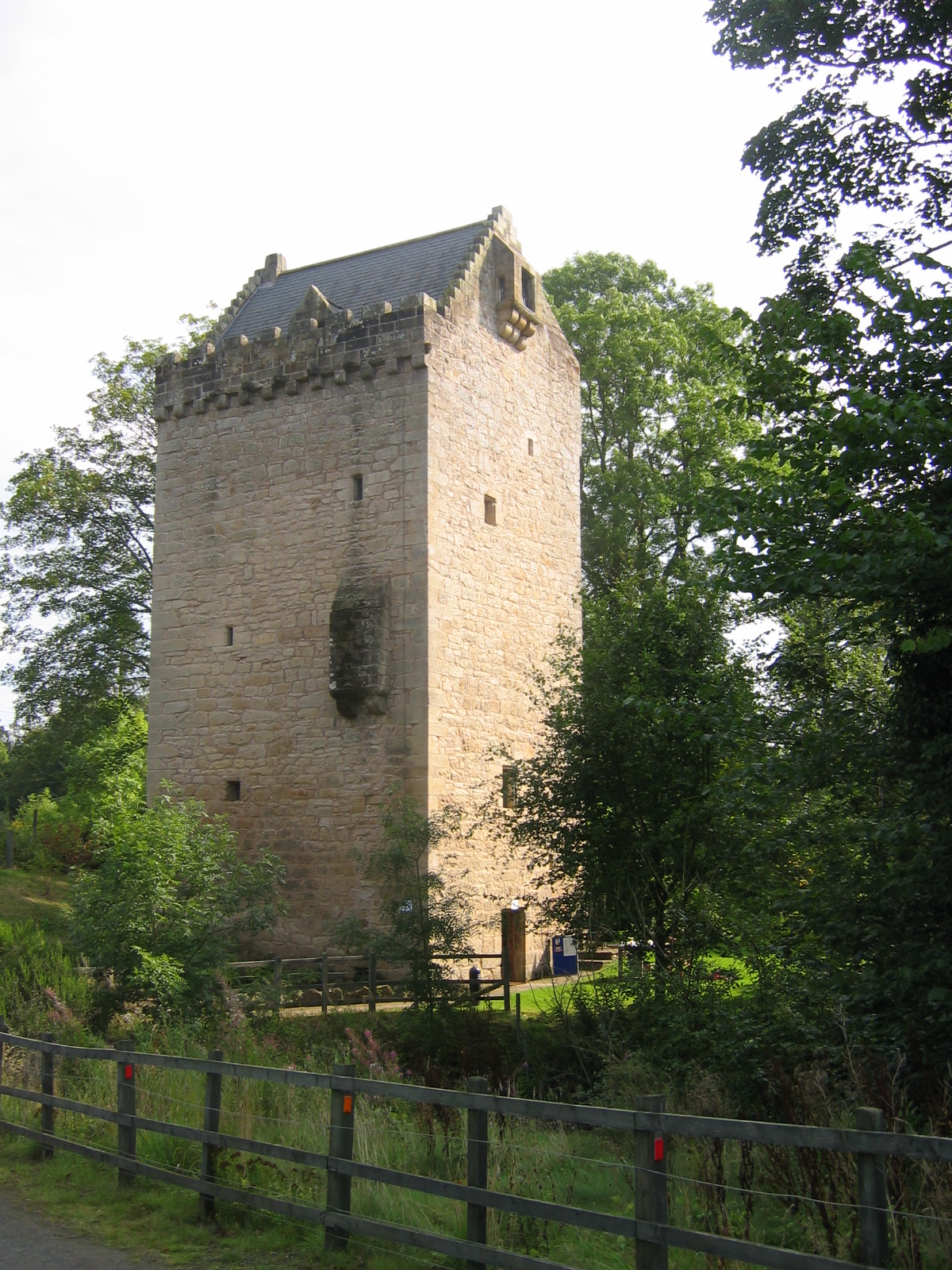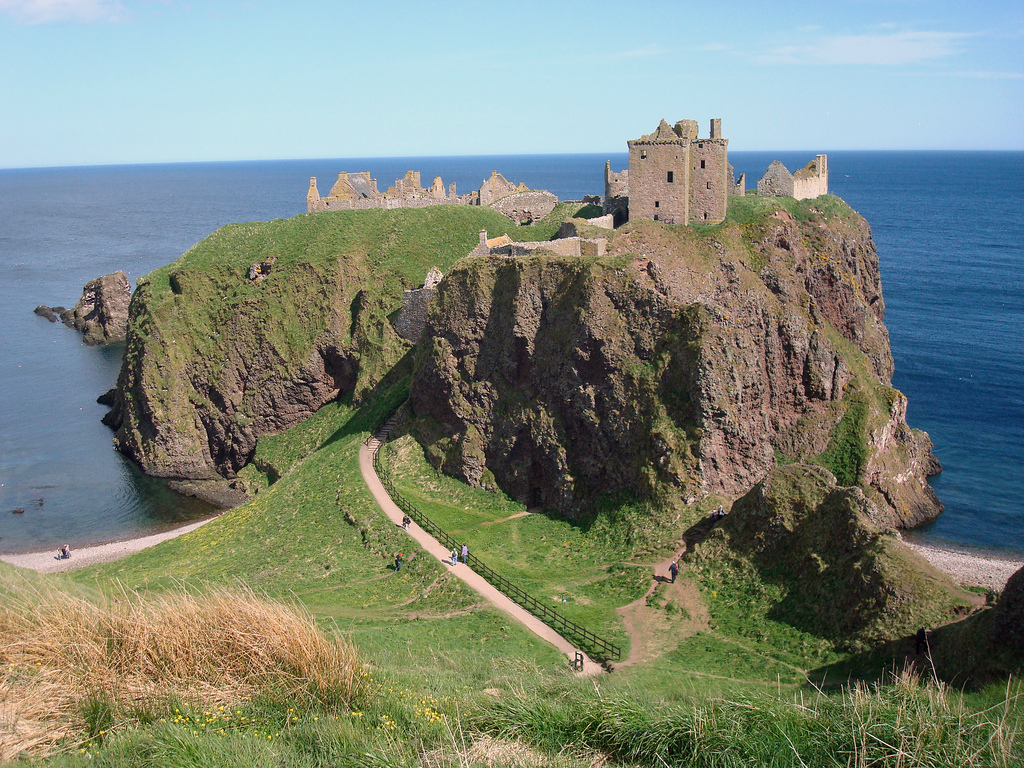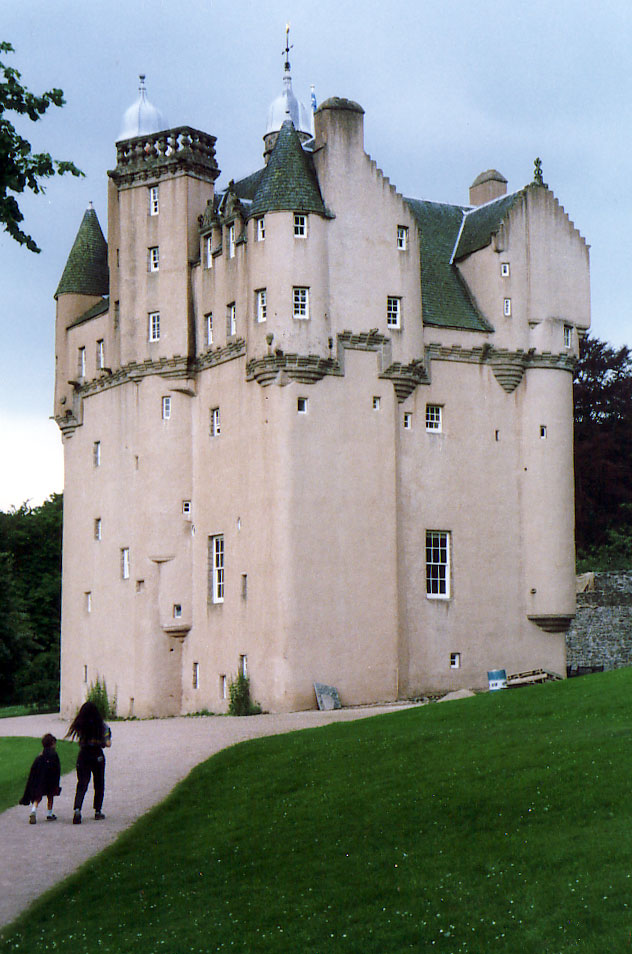|
Clackriach Castle
Clackriach Castle was a 16th-century tower house, about north of Ellon, Aberdeenshire, Scotland, and south-east of Maud, south of the South Ugie Water.Coventry, Martin (1997) ''The Castles of Scotland''. Goblinshead. p.118 Alternative names are Glackriach Castle and Clachraich Castle. History The property belonged to the Keiths. Structure Only the north-east angle Clackriach Castle remains, about high. The north wall, which includes part of a window, is about long. In the inside angle are remains of a staircase. The walls are roughly coursed with rubble infilling, lime mortared. The castle was on a slight eminence. It was an oblong building with a projecting wing; there was a turreted staircase, and arched doorway and window, evidence of which remained up to the 19th century. Vicinity The disused Mill of Clackriach dates to around 1827. As of 1990, its brick kiln was partly fallen in. Nearby Mill House is of similar age. Windhill Farm, from the 18th century, sits h ... [...More Info...] [...Related Items...] OR: [Wikipedia] [Google] [Baidu] |
Tower House
A tower house is a particular type of stone structure, built for defensive purposes as well as habitation. Tower houses began to appear in the Middle Ages, especially in mountainous or limited access areas, to command and defend strategic points with reduced forces. At the same time, they were also used as an aristocrat's residence, around which a castle town was often constructed. Europe After their initial appearance in Ireland, Scotland, the Frisian lands, Northern Spain and England during the High Middle Ages, tower houses were also built in other parts of western Europe, especially in parts of France and Italy. In Italian medieval communes, urban ''palazzi'' with a very tall tower were increasingly built by the local highly competitive patrician families as power centres during times of internal strife. Most north Italian cities had a number of these by the end of the Middle Ages, but few now remain, notably two towers in Bologna, twenty towers in Pavia and fourtee ... [...More Info...] [...Related Items...] OR: [Wikipedia] [Google] [Baidu] |
Ellon, Aberdeenshire
Ellon () is a town in Aberdeenshire, Scotland, approximately north of Aberdeen, lying on the River Ythan, which has one of the few undeveloped river estuaries on the eastern coast of Scotland. It is in the ancient region of Formartine. Its name is believed to derive from the Gaelic term ''Eilean'', an island, on account of the presence of an island in the River Ythan, which offered a convenient fording point. In 1707 it was made a burgh of barony for the Earl of Buchan. It is home to a unique collection of ancient yew trees. Places of interest Places of interest within the town include Ellon Castle Gardens, recently brought back to life by volunteers and open to the public (see website for latest opening times). They include a walled garden of historical importance, yew trees dating back 500-800 years and the ruins of old Ellon Castle, and the surrounding walls known as the ''Deer Dyke''. Ellon also has ''Auld Brig'', a category A listed bridge across the Ythan, built in 17 ... [...More Info...] [...Related Items...] OR: [Wikipedia] [Google] [Baidu] |
Maud, Aberdeenshire
Maud () is a village in the Buchan area of the Scottish county of Aberdeenshire, with a population of 780 (2006 estimate).General Register Office for Scotland, 2006 population estimate , accessed 12 October 2009 Located west of on the South Ugie Water, Maud rose to prosperity after 1863 as a railway junction of the |
South Ugie Water
The River Ugie or Ugie Water is a river in Buchan, Aberdeenshire, Scotland. It is formed by the junction of two streams, the North Ugie and the South Ugie, which meet near Longside. From here, the river flows eastwards to fall into the North Sea at Peterhead. Settlements (from west to east) * Old Deer * Stuartfield * Mintlaw * Inverquhomery * Longside * Rora * Newseat * Inverugie * Peterhead See also *Laeca Burn Laeca Burn is a stream in northeastern Aberdeenshire, Scotland. There are numerous archaeological sites in the Laeca Burn watershed, "especially on the eastern side of Laeca Burn", where Catto Long Barrow is situated.C. Michael Hogan (2008) C. ... References Ugie Buchan {{Scotland-river-stub ... [...More Info...] [...Related Items...] OR: [Wikipedia] [Google] [Baidu] |
Clan Keith
Clan Keith is a Highland and Lowland Scottish clan, whose chief historically held the hereditary title of Marischal, then Great Marischal, then Earl Marischal of Scotland.Way, George and Squire, Romily. (1994). ''Collins Scottish Clan & Family Encyclopedia''. (Foreword by The Rt Hon. The Earl of Elgin KT, Convenor, The Standing Council of Scottish Chiefs). pp. 180 – 181. History Origins of the clan The place-name Keith comes from a Cumbric form of the Modern Welsh ''coed'' ("wood"). A warrior of the Chatti tribe is said to have killed the Danish General, Camus, at the Battle of Barrie in 1010. For this valour Malcolm II of Scotland dipped three fingers into the blood of the dead and drew them down the warrior's shield. The warrior was thereafter named ''Marbhachair Chamuis'' which meant the ''Camus Slayer''. The chief of Clan Keith has borne the same three lines on his shield ever since. It can be found as early as 1316 on the seal of Sir Robert de Keith. King Malco ... [...More Info...] [...Related Items...] OR: [Wikipedia] [Google] [Baidu] |
Pantile
A pantile is a type of fired roof tile, normally made from clay. It is S-shaped in profile and is single lap, meaning that the end of the tile laps only the course immediately below. Flat tiles normally lap two courses. A pantile-covered roof is considerably lighter than a flat-tiled equivalent and can be laid to a lower pitch. In Britain, pantiles are found in eastern coastal parts of England and Scotland including Norfolk, East Yorkshire, County Durham, Perthshire, Angus, Lothian and Fife, where they were first imported from the Netherlands in the early 17th century. They are rarely used in western England or western Scotland, except in Bristol and the Somerset town of Bridgwater. In paving Roofing pantiles are not to be confused with the paving tiles also named "pantiles." The Pantiles in Royal Tunbridge Wells is named for the paving tiles installed there in 1699 — one-inch-thick square tiles made from heavy weald The Weald () is an area of South East England b ... [...More Info...] [...Related Items...] OR: [Wikipedia] [Google] [Baidu] |
Castles In Great Britain And Ireland
Castles have played an important military, economic and social role in Great Britain and Ireland since their introduction following the Norman invasion of England in 1066. Although a small number of castles had been built in England in the 1050s, the Normans began to build motte and bailey and ringwork castles in large numbers to control their newly occupied territories in England and the Welsh Marches. During the 12th century the Normans began to build more castles in stone – with characteristic square keep – that played both military and political roles. Royal castles were used to control key towns and the economically important forests, while baronial castles were used by the Norman lords to control their widespread estates. David I invited Anglo-Norman lords into Scotland in the early 12th century to help him colonise and control areas of his kingdom such as Galloway; the new lords brought castle technologies with them and wooden castles began to be established over the ... [...More Info...] [...Related Items...] OR: [Wikipedia] [Google] [Baidu] |
List Of Castles In Scotland
This is a list of castles in Scotland. A castle is a type of fortified structure built primarily during the Middle Ages. Scholars debate the scope of the word "castle", but usually consider it to be the private fortified residence of a lord or noble. This is distinct from a fortress, which was not a home, although this distinction is not absolute and the same structure may have had different uses from time to time. The term has been popularly applied to structures as diverse as hill forts and country houses. Over the approximately 900 years that castles were built, they took on a great many forms. In Scotland, earlier fortifications had included hill forts, brochs, and duns; and many castles were on the site of these earlier buildings. The first castles were built in Scotland in the 11th and 12th centuries, with the introduction of Anglo-Norman influence.Lindsay, Maurice (1986) ''The Castles of Scotland''. Constable. p.17 These motte and bailey castles were replaced with t ... [...More Info...] [...Related Items...] OR: [Wikipedia] [Google] [Baidu] |
Royal Incorporation Of Architects In Scotland
The Royal Incorporation of Architects in Scotland (RIAS) is the professional body for architects in Scotland. History Previously the (lapsed) Architectural Institute of Scotland, it was re-founded in 1916 as the Incorporation of Architects in Scotland by architect Robert Rowand Anderson (1834–1921) from his sick bed. Anderson donated his Georgian architecture, Georgian townhouse in Edinburgh to be used as its home, where the organisation still remains. It was given its first Royal charter in 1922, followed by a second in 1929. Past presidents include leading Scottish architects such as John Keppie, Robert Lorimer, James Dunbar-Nasmith and Jack Coia. In 2017, a hundred leading Scottish architects demanded a major shake-up of the organisation, describing it as "self-satisfied" and "bunkered" and calling for it be more transparent, inclusive and accountable over its decision-making. Around the same time, a complaint had been made to Police Scotland concerning Neil Baxter, the ... [...More Info...] [...Related Items...] OR: [Wikipedia] [Google] [Baidu] |






